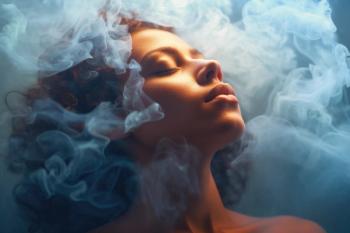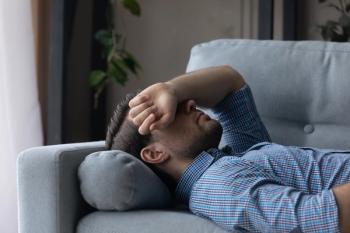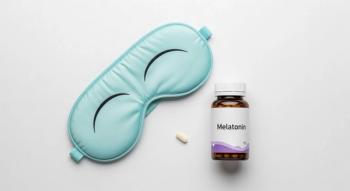
Psychiatric Comorbidities Common in Narcolepsy
In this custom video series, Debra Stultz, MD, comments on common psychiatric comorbidities seen with narcolepsy and the impact on a patient’s quality of life.
Episodes in this series

Haramandeep Singh, MD: What are the other main common psychiatric comorbidities that you find with patients who have narcolepsy?
Debra Stultz, MD: Depression and anxiety for sure, along with panic and PTSD [post-traumatic stress disorder]. A lot of the psychiatric disorders can have narcolepsy or narcolepsy-like signs and symptoms. One of our landmark studies over the years has been the Burden of Narcolepsy Disease study by Dr [Jed] Black and associates. They looked at what kinds of illnesses are associated with narcolepsy, and psychiatric illness was at the top of the list at 31%, followed by GI [gastrointestinal] disturbances and then neurological things. At least a third of the patients with narcolepsy had some kind of psychiatric illness, whether it was depression or anxiety or panic attacks.
There’s a lot of social anxiety in patients with narcolepsy, especially if they have a large component of cataplexy, because they’re fearful that they might get out and have an episode and would be embarrassed, or they go out to eat and get extremely sleepy, like can’t-hold-their-head-up sleepy. They have a lot of anxiety about going to certain restaurants and around a lot of crowds or people they don’t know very well. There’s a lot of depression and anxiety.
Haramandeep Singh, MD: I absolutely agree. One other one I’d mention here is ADHD [attention-deficit/hyperactivity disorder]. Sometimes patients who have sleep disorders in general and narcolepsy because they’re not sleeping well, they can’t focus, they can’t concentrate, and they can’t remember. We often find that they come to us already on stimulants for ADHD, when they actually have a sleep disorder.
Debra Stultz, MD: Right, it’s not treated. When we look at the medical disorders, it’s associated with all our sleep disorders too, like sleep apnea, periodic limb movement disorder, and restless leg syndrome. Sleep apnea is another place where we need to be sure and address if there are any narcolepsy symptoms present, because it’s estimated that about 30% of patients with narcolepsy can have coexisting sleep apnea, and 5%— some of the later studies say up to 30%—of patients with sleep apnea can have narcolepsy. Once they’ve had 1 sleep study, it’s not 1 and done with your diagnosis or treatment.
Haramandeep Singh, MD: Thank you for bringing that up, because even in that Burden of Narcolepsy Disease study, we find that outside psychiatric comorbidities, the highest was sleep apnea.
Debra Stultz, MD: Yes.
Haramandeep Singh, MD: With our patients who have sleep apnea, we often get tuned in to treating them with a CPAP [continuous positive airway pressure] machine and adjusting pressures, and we miss the fact that they’re not responding to treatment or they’re partially responding and they pull more to narcolepsy, which is so common.
Debra Stultz, MD: I absolutely love modafinil, armodafinil, and Sunosi in the treatment of excessive daytime sleepiness of sleep apnea. Modafinil and armodafinil have especially moved us in the sleep world an incredible amount in helping people out. But I also think we’ve half-treated narcolepsy. With some of these people who have coexisting disorders, we’ve treated a lot of their sleepiness. Now we have patients presenting to us who have narcolepsy, and their sleepiness is fairly well controlled, but they have cataplexy. They may go to the neurologist or psychiatrist because they have these weird symptoms. They think it must be psychiatric, and that it’s something in their head, and it may be that the other medicines have helped with the excessive daytime sleepiness, but now the cataplexy is the most prominent thing.
Haramandeep Singh, MD: Great point. I saw a patient the other day who was treated with modafinil and armodafinil for daytime sleepiness from OSA [obstructive sleep apnea]. But they were just missing the cataplexy that she had. It was subtle, it wasn’t happening, and eventually those medicines wore out and she really needed to get on something that was more tuned in to her cataplexy as well as her CPAP. She continued to use her CPAP, and then getting on something like sodium oxybate or pitolisant made a big difference for her.
Debra Stultz, MD: Right. I’m pretty fixated on looking for sleep and psychiatric stuff from the very beginning. That’s what I tell the students who rotate with me. You can’t tease them out in the world that we live in. Usually there’s a screener where patients fill out an extensive questionnaire, but I ask every psychiatric patient about sleep stuff and every sleep patient about psychiatric stuff. I do because I don’t think you can exclude those 2.
Haramandeep Singh, MD: I’m with you. I’m the same way.
Debra Stultz, MD: Yes, right.
Haramandeep Singh, MD: I appreciate it for sure.
Transcript edited for clarity.
Disclosures:
Dr Stultz has disclosed that she serves as a consultant on the advisory board for Harmony Biosciences and that she receives support in her role with the speaker’s bureau for Harmony Biosciences and Jazz Pharmaceuticals.
Dr Singh has disclosed that he serves as a consultant and receives support in his role with the speaker's bureau for Jazz Pharmaceuticals and Harmony Biosciences.
Newsletter
Receive trusted psychiatric news, expert analysis, and clinical insights — subscribe today to support your practice and your patients.


















